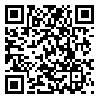Volume 7, Issue 4 (Winter 2021)
johe 2021, 7(4): 16-26 |
Back to browse issues page
Download citation:
BibTeX | RIS | EndNote | Medlars | ProCite | Reference Manager | RefWorks
Send citation to:



BibTeX | RIS | EndNote | Medlars | ProCite | Reference Manager | RefWorks
Send citation to:
Nasrollahi M, Shazdeh Ahmadi M. Prediction of Occupational Risks Using an Adaptive Neural Fuzzy Inference System in AZARAB Company. johe 2021; 7 (4) :16-26
URL: http://johe.umsha.ac.ir/article-1-623-en.html
URL: http://johe.umsha.ac.ir/article-1-623-en.html
1- Department of Industrial management Imam Khomeini International University (IKIU), Qazvin, Iran , m.nasrollahi@soc.ikiu.ac.ir
2- Department of Industrial management Imam Khomeini International University (IKIU), Qazvin, Iran
2- Department of Industrial management Imam Khomeini International University (IKIU), Qazvin, Iran
Abstract: (4875 Views)
Background and Objective: Nowadays, none of the industries wants an accident to happen in their workplaces, and therefore, they use different tools to accomplish this aim. One of these tools is risk analysis, which is capable of identifying risks and inappropriate situations. Due to the importance of occupational risk prediction and injury reduction, this study was conducted to investigate occupational risk prediction using different neural network algorithms.
Materials and Methods: This applied research was performed based on causal and survey approaches. Accordingly, a database of 119 incidents in 2018 was included in this study, which was sufficient reliable due to the high accuracy of the neural network algorithms in the database. The dynamic artificial neural network algorithm had the highest accuracy (76%) in predicting occupational injury.
Results: Based on the results, the most important criteria affecting the risk of occupational injury were day-time, type of accident, and hazardous situations involved in the accident.
Conclusion: This research can offer practical applications for Azarab company since this company can put all the vulnerabilities together, predict the risk of each of these situations by implementing the neural network algorithm, and accordingly take measures to provide risk control instructions.
Materials and Methods: This applied research was performed based on causal and survey approaches. Accordingly, a database of 119 incidents in 2018 was included in this study, which was sufficient reliable due to the high accuracy of the neural network algorithms in the database. The dynamic artificial neural network algorithm had the highest accuracy (76%) in predicting occupational injury.
Results: Based on the results, the most important criteria affecting the risk of occupational injury were day-time, type of accident, and hazardous situations involved in the accident.
Conclusion: This research can offer practical applications for Azarab company since this company can put all the vulnerabilities together, predict the risk of each of these situations by implementing the neural network algorithm, and accordingly take measures to provide risk control instructions.
Type of Study: Research Article |
Subject:
Safety
References
1. Zhou Q, Wong YD, Loh HS, Yuen KF. ANFIS model for assessing near-miss risk during tanker shipping voyages. Maritime Policy Manag. 2019;46(4):377-93. DOI: 10.1080/03088839.2019.1569765 [DOI]
2. Yari P, Yarahmadi R, Khosravi Y, Salehi M, Kariznovi H. Presenting occupational accidents patterns based on the affinity of risk-injury groups (case study). Health Saf Work. 2017;7(3):255-66. [Persian]
3. Shahba S, Nouri J, Barani S, Shahba S, Nourbakhsh S. Assessment of occupational hazards with safety approach in concentrative unit of Sirjan Gol-E-Gohar Iron company using job safety analysis. J Environ Sci Technol. 2017;19(5):103-10. [Persian]
4. Paul PS. Predictors of work injury in underground mines-an application of a logistic regression model. Mining Sci Technol (China). 2009;19(3):282-9. DOI: 0.1016/S1674-5264(09)60053-3 [DOI]
5. Jahangiri M, Jalali M, Saeidi CH, Mohammadpour H, Mardi H, Mehr Alipour J. Health risk assessment of harmful chemicals in order to provide control guidelines: case study in a polyurethane foam industry. Occup Med Quart J. 2013;5(4):33-41. [Persian]
6. Fragiadakis NG, Tsoukalas VD, Papazoglou VJ. An adaptive neuro-fuzzy inference system (ANFIS) model for assessing occupational risk in the shipbuilding industry. Saf Sci. 2014;63:226-35. DOI: 10.1016/j.ssci.2013.11.013 [DOI]
7. Karaboga D, Kaya E. Adaptive network based fuzzy inference system (ANFIS) training approaches: a comprehensive survey. Artific Intellig Rev. 2019;52(4):2263-93. DOI: 10.1007/s10462-017-9610-2 [DOI]
8. Micallef CM, Shield KD, Baldi I, Charbotel B, Fervers B, Ilg AGS, et al. Occupational exposures and cancer: a review of agents and relative risk estimates. Occup Environ Med. 2018;75(8):604-14. PMID: 29735747 DOI: 10.1136/oemed-2017-104858 [DOI] [PubMed]
9. Nakhainejad M, Banaian Jahromi O. Occupational injury risk prediction in power plant industries using fuzzy neural network system study: Jahrom combined cycle power plant. 2nd International Conference on New Research in Management, Economics and Development, Tehran, Iran; 2017. [Persian]
10. Bacanli UG, Firat M, Dikbas, Adaptive neuro-fuzzy inference system for drought forecasting. Stochastic Environ Res Risk Assess. 2009;23(8):1143-54. DOI: 10.1007/s00477-008-0288-5 [DOI]
Send email to the article author
| Rights and permissions | |
 |
This work is licensed under a Creative Commons Attribution-NonCommercial 4.0 International License. |







